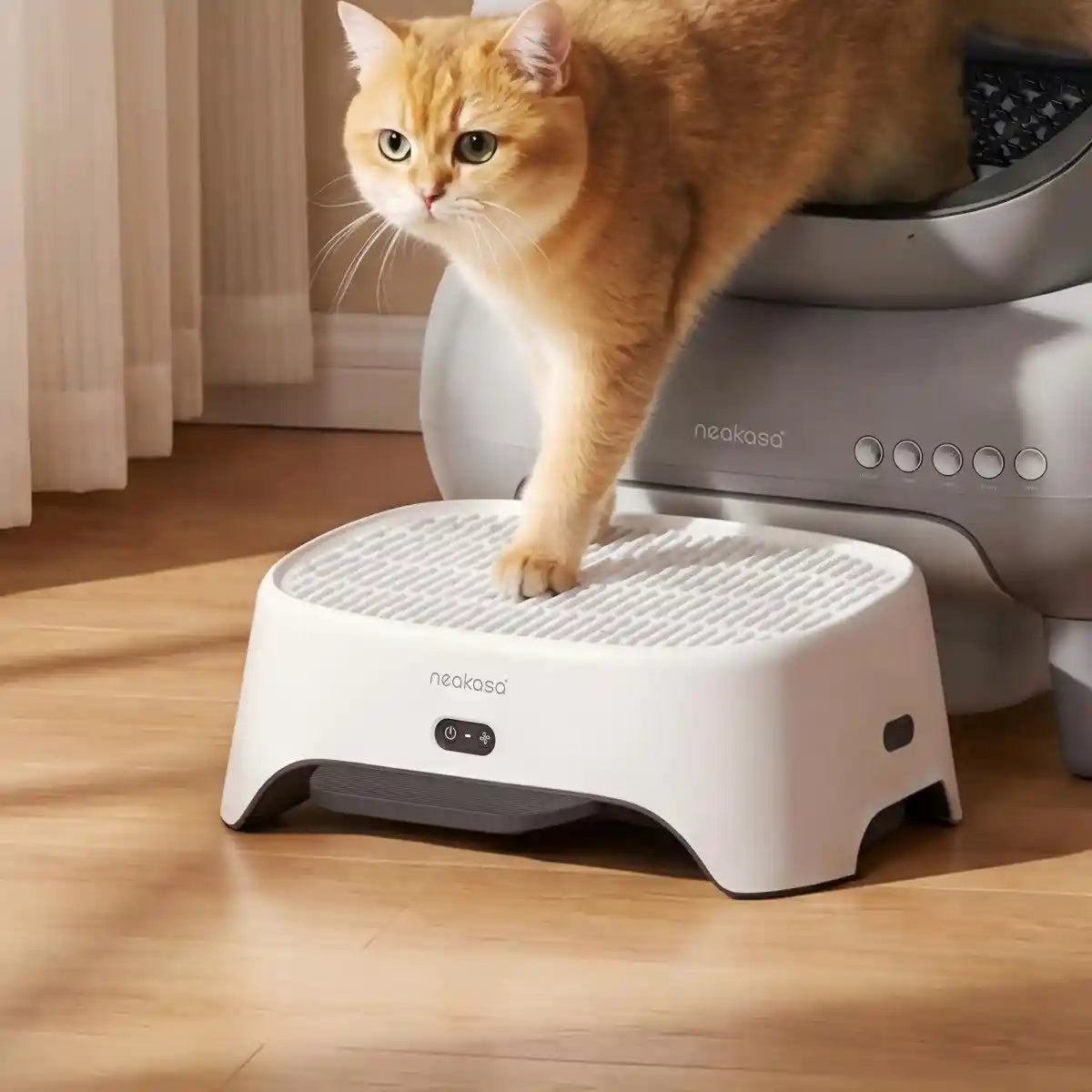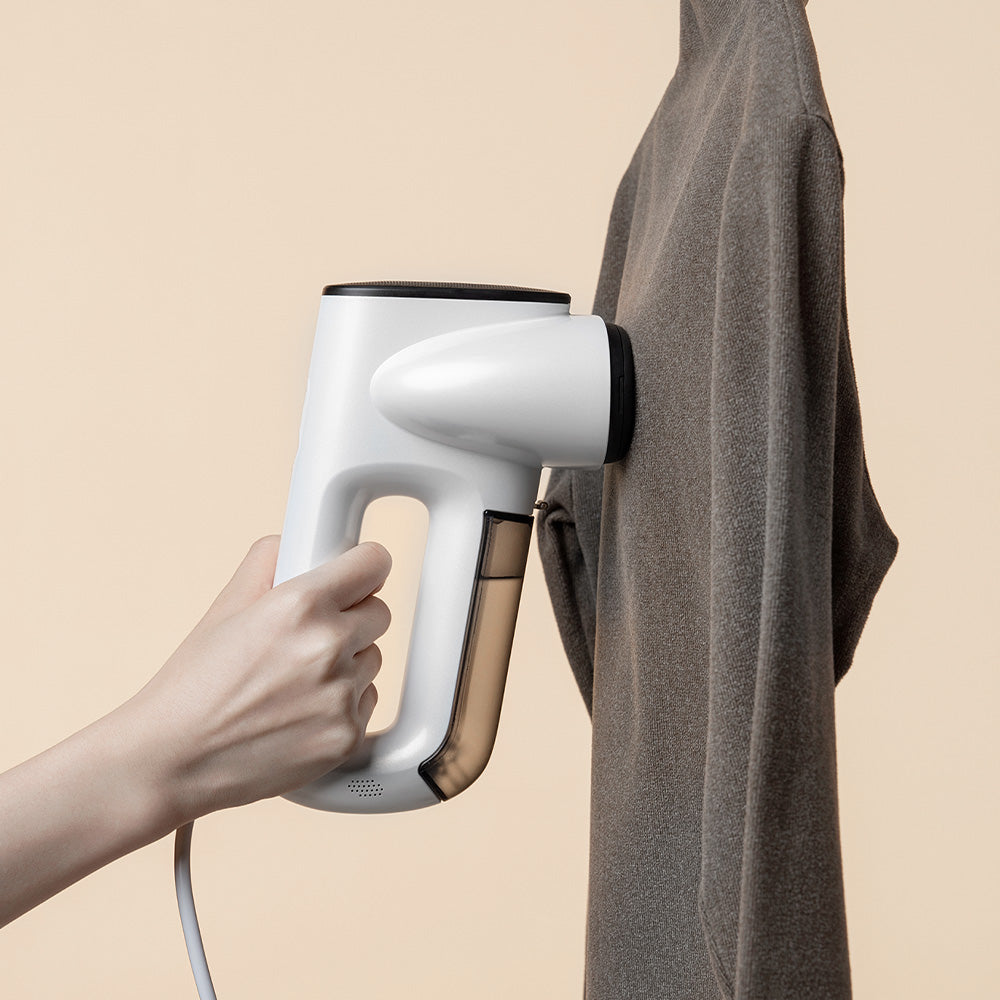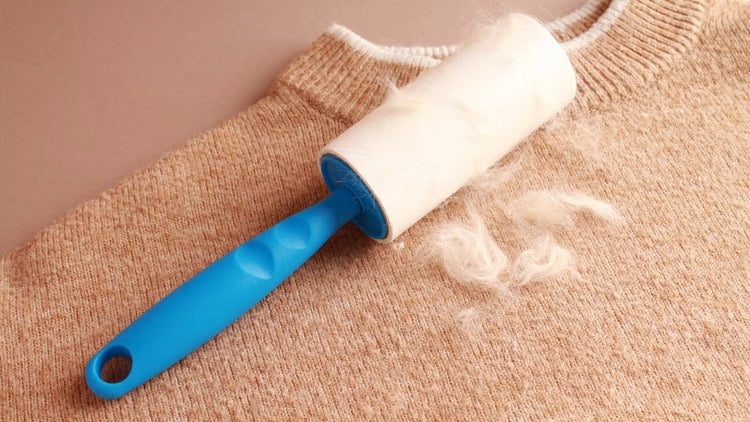Lint is a universal frustration that can make even your favorite outfits look tired and unkempt. Whether it's a black sweater covered in white fluff or a pair of trousers dotted with pet hair, knowing how to remove lint from clothes is a key part of maintaining a flawless wardrobe.
This guide will walk you through simple and effective tips, from classic methods to clever DIY hacks, so you can enjoy a polished, well-kept look every time.
What is Lint and Where Does it Come From?
Lint refers to the small fibers, hairs, and particles that shed from clothing and fabrics. It usually appears after wearing or washing garments. Common sources of lint include:
- Fabric friction: Clothes rubbing together in the washing machine, dryer, or during daily wear release tiny fibers.
- Material breakdown: Over time, natural wear causes fabrics to shed loose threads and fuzz.
- Static electricity: Static attracts fibers, dust, and hair, making lint more noticeable on dark fabrics.
- Washing and drying cycles: Heat and tumbling increase fiber shedding, leading to lint buildup.
Understanding where lint comes from is the first step to preventing it and keeping clothes looking clean.
How to Use a Lint Roller to Get Lint Off Clothes Quickly
The lint roller is the most convenient tool for quick lint removal. Its sticky sheets pick up loose fibers from almost any fabric. Follow these steps for best results:
-
Step 1: Uncover the Sheet
Peel off the top layer of the adhesive sheet to expose a fresh, sticky surface. -
Step 2: Roll in One Direction
Gently roll the lint roller over the clothing in a single, consistent direction.
-
Step 3: Check and Peel
Once the sheet is full of lint and no longer sticky, tear it off to reveal a new one underneath. -
Step 4: Repeat as Needed
Continue the process until your garment is completely lint-free.
The lint roller is a simple and effective solution, but there are also plenty of alternatives if you don’t have one.
How to Remove Lint from Clothes Without a Lint Roller
Sometimes you find yourself in a bind with no lint roller in sight. Even without a roller, common household items can help you achieve a lint-free look:
Method 1: Duct Tape or Packing Tape for Lint Removal
For a powerful, adhesive-based solution, you can use duct tape or packing tape.
This method works because the strong adhesive surface of the tape quickly grips lint, pet hair, and other small fibers that cling stubbornly to clothing.
- Cut a strip of tape long enough to wrap around your fingers.
- Wrap the tape around your hand with the sticky side facing outward.
- Gently press or pat the tape onto the clothing surface where lint is visible.
- Replace the tape when it loses stickiness and repeat until all lint is removed.

Method 2: Try Damp Rubber Gloves or a Sponge
Rubber gloves and sponges create friction that helps collect lint and pet hair.
When slightly moistened, these everyday household items generate just the right amount of grip to gather lint into clumps, making it easy to remove.
- Slightly dampen a pair of rubber gloves or a clean kitchen sponge.
- Put on the gloves (if using) and rub them across the clothing in a downward motion.
- The lint will stick to the damp surface.
- Rinse off the gloves or sponge when they accumulate too much lint, then continue.

Method 3: Use Velcro Strips
Velcro can double as a quick lint remover, but should be used with care on delicate fabrics.
The tiny hooks on Velcro are naturally designed to catch fibers, which makes them effective at lifting lint from sturdier fabrics.
- Take a piece of Velcro (hook side).
- Lightly press or dab it onto the area with lint.
- Lift the Velcro gently to pull away the lint.
- Repeat until the fabric looks clean.

Avoid using this method on silk, chiffon, or other delicate fabrics to prevent snags.
Method 4: Dryer Sheet to Reduce Lint
Dryer sheets, even used ones, still have anti-static properties that can fight lint buildup.
The anti-static agents help neutralize the static charge that attracts lint to clothing, while the sheet’s soft texture gently loosens fibers clinging to fabric.
- Take a dryer sheet (fresh or used).
- Rub it gently over the surface of your clothes in a circular motion.
- The sheet will help lift lint while also reducing static electricity.
- Dispose of or reuse the dryer sheet as needed.

Tricks to Refresh Clothes After Lint Removal
Once you've removed the visible lint, you can take a few extra steps to ensure your clothes look perfectly polished.
Using a Clothes Steamer for a Lint-Free Finish
A clothes steamer can do more than just remove wrinkles. The combination of heat and steam can help relax fabric fibers and release any remaining lint or debris. After you've removed the lint, a quick pass with a steamer will give your garments a clean, crisp, and refreshed finish.
For a convenient option, consider the Neakasa Magic 1 Handheld Steamer:
- Compact & Portable Design: Lightweight and easy to carry, perfect for home use, business trips, or travel.
- Fast Heat-Up: Heats up in seconds, delivering powerful steam almost instantly for quick garment refreshes.
- 2-in-1 Function: Not only removes wrinkles but also helps reduce lint, static, and odors for cleaner-looking clothes.
- Safe for All Fabrics: Gentle yet effective on cotton, wool, polyester, silk, and even delicate fabrics without risk of scorching.
- Easy-to-Use Water Tank: Removable water tank for quick refills, ensuring continuous steam for multiple garments.

- AirIron Technology for Instant Wrinkle Removal.
- Effortless One-Handed Operation, Safe & Easy.
- Triple the Speed, Triple the Results.
Prevention Tips for a Lint-Free Wardrobe
Preventing lint is often easier than removing it. Small changes to your laundry routine can reduce lint buildup:
- Sort Your Laundry to Minimize Lint Transfer: Wash lint-producing fabrics (towels, fleece) separately from lint-attracting ones (dark clothes, corduroy, polyester).
- Wash Clothes Inside Out: Turn garments inside out to reduce friction and keep the outer surface looking new.
- Use White Vinegar in Laundry: Pour ½ cup into the rinse cycle to soften fabric and help loosen lint.
- Regularly Clean Washer and Dryer: Empty the dryer filter after each load and clean the washer seals regularly.
- Avoid Mixing Fabrics That Shed Heavily: Don’t wash fuzzy items like wool or fleece with smooth, dark fabrics.
FAQs
Q1: Does Rewashing Clothes Remove Lint?
Sometimes, especially with proper sorting and a splash of vinegar in the rinse. But prevention is more effective than rewashing.
Q2: Can Lint Damage Clothes Over Time?
Yes. Excessive lint and pilling make fabrics wear out faster and look older. Regular removal helps extend garment life.
Q3: Are Lint Removers Safe For All Fabrics?
Generally yes, but be gentle with delicate fabrics like silk or lace. Use electric shavers or pumice stones cautiously.
Conclusion: Keep Your Clothes Lint-Free Every Time
Knowing how to remove lint is essential for anyone who wants a polished wardrobe. Whether you use a lint roller, household alternatives, or focus on prevention, you can keep your garments looking their best.
Adding a gentle steaming step after lint removal refreshes fabrics, reduces static, and supports fabric health. A compact option like the Neakasa Magic 1 makes this process quick and practical without extra hassle.
By incorporating these small habits and simple care steps, you can enjoy a flawless, lint-free wardrobe for years to come.








Leave a comment
This site is protected by hCaptcha and the hCaptcha Privacy Policy and Terms of Service apply.